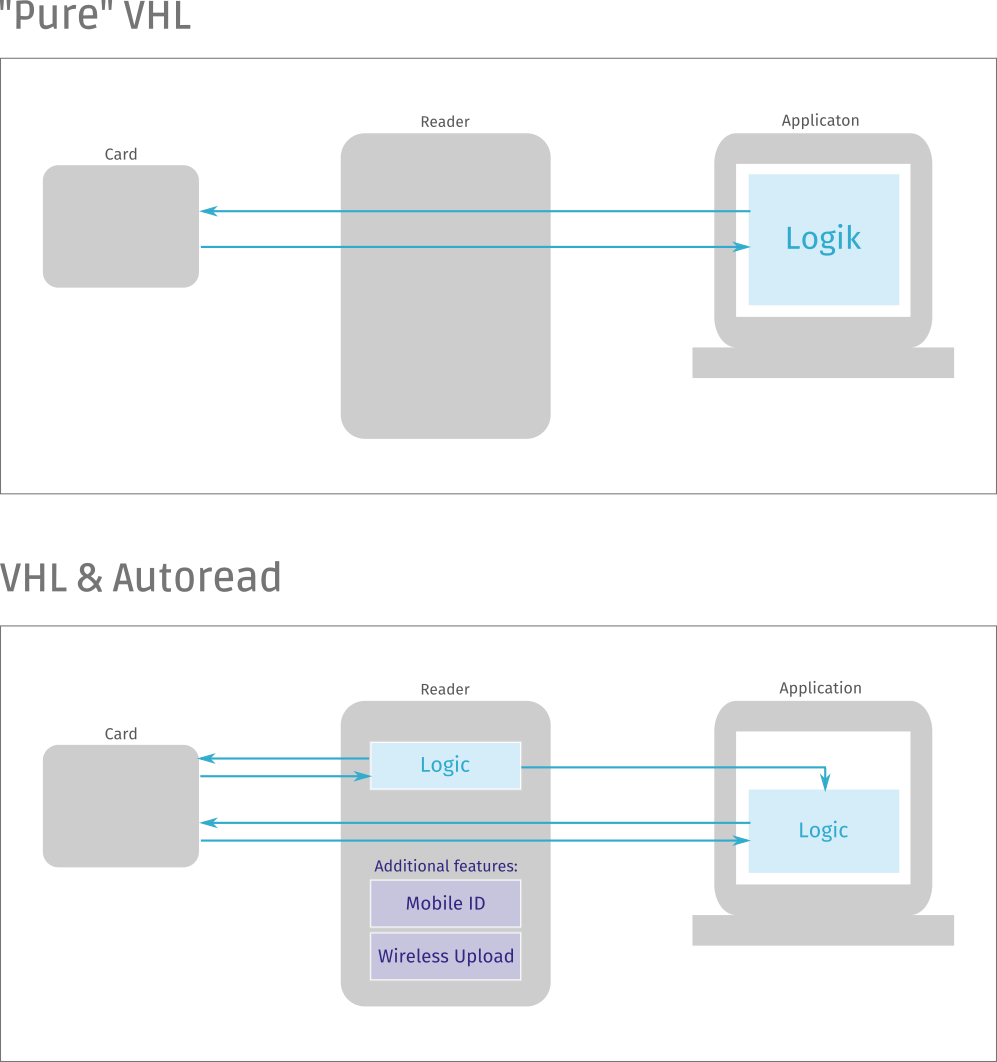Are your development teams using our VHL macro command set? Great choice! After all, it comes with a lot of advantages compared to low-level commands. Now, however, we at BALTECH encourage you to combine it with another of our operation modes: Autoread. Here’s why this approach will help you make application development more efficient and future-proof.
The power of VHL
VHL (Very High Level) has been our go-to recommendation for developers working with BALTECH readers, and for good reasons:
- Read and write even large amounts of data with powerful, error-resistant commands.
- Eliminate the need for in-depth card system knowledge.
- Create universal applications across different card types: For example, an application for MIFARE DESFire cards can also be used with LEGIC cards – no code changes required. The card type-specific information is outsourced to the reader configuration.
What is Autoread?
In Autoread mode, the reader handles many tasks autonomously, without being controlled by the application. This includes:
- Autonomous card scanning, validation, and number reading
- Automatic number interpretation and formatting
- Autonomous interaction with card holders by switching the beeper, LED, or a relay
All the information that the reader needs for this is stored in its configuration.
VHL & Autoread – a strong combination
By combining VHL with Autoread, you’ll gain:
- Reduced complexity: Shift even more logic from the application to the reader, so developers don’t need to handle basic tasks or worry about details such as data encoding or prioritization of logical card types.
- Enhanced flexibility: Many adjustments that come up during operations can be made in the reader configuration, reducing the need for application updates.
- Future-readiness: Our latest features such as Mobile ID or Wireless Upload are based on Autoread, and future developments will rely on this mode as well.

Implementing VHL & Autoread
Here’s an overview of how it works:
- The reader operates in Autoread mode, handling card scanning, validation, etc. autonomously.
- Upon reading a valid card number, Autoread mode pauses.
- Your application retrieves the number, executes VHL commands, and reactivates Autoread.
For a full implementation guide, please visit our documentation.
Any questions? Then please get in touch with us. We’re looking forward to helping you get started!


